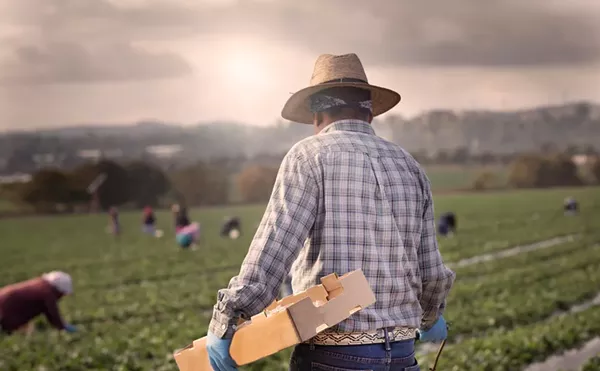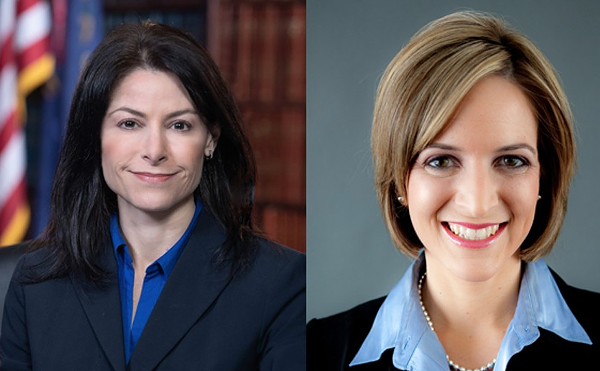Optimism in the hood?
In one part of Detroit, new neighbors, consciousness-raising, signal welcome change afoot

Audio By Carbonatix
[
{
"name": "GPT - Leaderboard - Inline - Content",
"component": "35519556",
"insertPoint": "5th",
"startingPoint": "3",
"requiredCountToDisplay": "3",
"maxInsertions": 100,
"adList": [
{
"adPreset": "LeaderboardInline"
}
]
}
]
Perspective is a matter of position. Right now in my neighborhood, from where I sit, things are looking up. That's partly because the house directly across the street from me had been empty for a couple of years, but now it's occupied by a couple and their three kids. They are friendly and seem like they'll be good neighbors. The same goes for the people who moved in a couple of doors over. That house was never vacant, but the guy who lived there for 47 years decided to move to Florida after his wife died. I can't blame him. However, he was a good neighbor and you never know what you're going to get when the new folks move in. That still leaves a couple of empty houses on the block, but we're better off than most.
A few months back, the real estate agent who was showing the house across the street told me that the housing market in Detroit had hit bottom and was turning around, at least in the area where I live — not far from the Avenue of Fashion, as we still call Livernois south of Eight Mile long after most of the fashion shops have gone. I didn't know how much faith to put in his words, but it seems that he may have been right. I've seen a couple of news stories saying that the market in southeast Michigan is getting a little better, at least in spots. Of course, that doesn't necessarily mean Detroit, but, like I say, what I can see from my front door looks good.
In general I've been seeing a lot of new faces in the neighborhood. Among them are my old Free Press co-worker Vickie Elmer and her partner Mark Loeb. They moved in the next street over in December and have already made a difference in the neighborhood. Elmer — who lived in Lathrup Village, then New York, Indianapolis, then Ann Arbor before settling in Detroit — was the catalyst for the first Jane's Walk in Michigan this past Sunday.
Jane Jacobs was a great observer of urban life who wrote The Death and Life of Great American Cities a half-century ago. She believed that cities could best be explored and improved by getting up and walking around. This "Live, Love Detroit Walk" had about 115 people strolling around Greenacres, where Elmer and I live, and nearby Sherwood Forest. These are among Detroit's tonier neighborhoods, but the abandoned homes syndrome and crime that affects pretty much all of the city creeps in here too. The bottom line is if residents take care of their own neighborhood, things would be much better throughout the city.
"This is a surprising place for people who have a picture of Detroit that comes from the media," says Elmer. "I was surprised by the rich diversity of people in this neighborhood, not so much about race, but income, education, occupation and a variety of ages. I really think that people came away excited by Detroit. I've been feeling for a few years that, as cool as Ann Arbor is, there's not the raw edge you can find in Detroit. We feel like it's going to be a good place to be."
The move is definitely good for Loeb, whose event planning business, Integrity Shows, has clients mostly in Detroit, Ferndale and Royal Oak. He's been commuting to put on arts shows, green fairs and the Jazzin' on Jefferson festival (June 15-16 this year).
Maybe it is a good time to be in Detroit. I'm not sure what it is, but it seems like now that the consent agreement has been signed between Detroit and the state of Michigan, all of a sudden it's OK to say good things about the city. For the moment, I'm not going to take the jaded view that it means outside forces are conspiring to devalue Detroit until they can get their hands on it and take over. Most of the stuff that's coming around has been a long time in the making.
Like the Woodward light rail line, for instance. We've been talking about it for many years. In fact, the People Mover, built in the 1970s, was originally envisioned as part of a larger transit system. In recent years there has been much talk, first it was public, then it was private, then it was public-private, I'm not sure where that stands now. Then we couldn't afford it at all and would go with a rapid bus system. Actually when that development popped up it distressed me. I had read a little about urban transit and trains are hands-down better for economic development than buses. I'm not sure why, but all kinds of business springs up around train stops and the value of area real estate goes up too.
Now it looks like it really is going to be a train, although ambitions have been scaled back to the original idea of running it from Jefferson to Grand Boulevard instead of out to Eight Mile Road. That stands to be a boon for Midtown, where neighborhood anchors such as Wayne State University, the Detroit Medical Center and the Cultural Center have been parlayed into a gentrification and economic development not seen in any other part of the city.
Bruce Katz of the Brookings Institution was on The Craig Fahle Show a couple weeks ago extolling the virtues of Midtown and the Woodward corridor. "It's a 1.5-mile area," he said. "You've got 24,000 residents; you've got 46,000 workers, a whole bunch of students, over 30,000. My lord, that's a platform to build on."
Things are looking up in some other neighborhoods. In Brightmoor, where I lived for several years before moving to Greenacres, urban agriculture has begun to transform an area that has been plagued by empty, falling-down houses and other blight. The western part of the neighborhood hosts at least 22 kitchen, community and market gardens. . A neighborhood organization takes on block cleanups if someone on the block steps up and takes charge. Neighbors also turned an abandoned house into a neighborhood stage, and created playscapes and a nature trail.
On the east side, the Lower Eastside Action Plan (which I wrote about a couple of months ago) is harnessing a number of community development organizations and urban agriculture activists to clean up and stabilize neighborhoods and build a food system with local gardeners and farmers.
There is plenty more that needs to happen around here to change the culture and the trajectory of the city. But for a while this spring, I thought I'd dwell on the positive, and take a cue from the smiling new faces I'm seeing in the neighborhood.
Detroit Food Summit: The Detroit Food Policy Council's annual summit, "Powering Up the Local Food System," takes place May 18-19 at the Focus: HOPE Conference Center. Sessions will be held on Children and Food in Schools, Grocery Stores and the Food System, Alternative Markets Visioning, Urban Agriculture Policy, Good Food Good Jobs, and other issues around creating a homegrown food system. More information and registration is available at www.detroitfoodpolicycouncil.net or call 313-833-0396.






